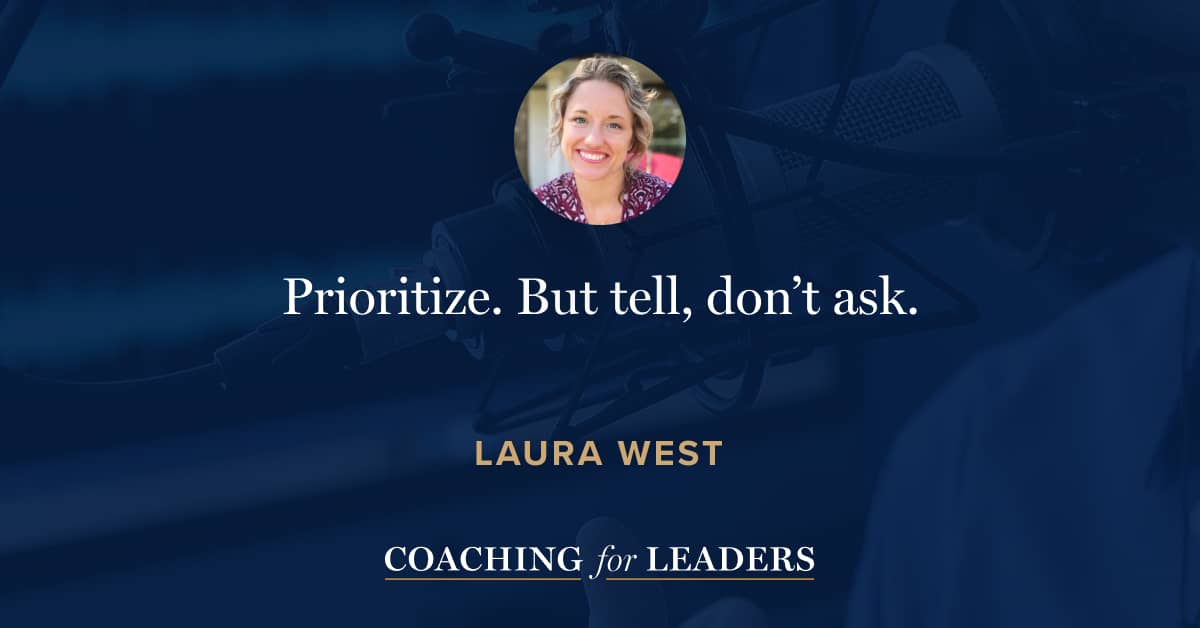Laura West: Coaching for Leaders Fellow
Laura West is a seasoned leader and researcher with many years experience executing and training others in data analysis and strategy. She's led large teams across several organizations, holds a Ph.D. in linguistics, and is an alum of the Coaching for Leaders Academy. She was selected as one of our new Coaching for Leaders fellows and has taken on a leadership role in supporting our current Academy members.
What do you do when you get a request from a stakeholder, but don’t have the resources to fulfill it? That’s a reality almost every leader faces. In this conversation, Laura and I discuss both the mindset and tactics that will help you respond well.
Key Points
- Rather than an immediate “no,” spend an hour working through some steps to creatively problem solve around the request.
- Show your work. When you respond, share who you’ve talked with and what’s already been considered to respond to the request.
- Present options by summarizing 2-4 paths forward and your recommendations.
- Be the data person. Highlight trends over time that help influence different business decisions and maintain your credibility.
- Prioritize. But tell, don’t ask. Take the lead on identifying what’s important on behalf of the stakeholder and begin the work.
Resources Mentioned
- Responding to Stakeholder Requests With Limited Resources by Laura West (free membership required)
Related Episodes
- The Way to Turn Followers Into Leaders, with David Marquet (episode 241)
- How to Start Managing Up, with Tom Henschel (episode 433)
- The Way to Influence Executives, with Nancy Duarte (episode 450)
Discover More
Activate your free membership for full access to the entire library of interviews since 2011, searchable by topic. To accelerate your learning, uncover more inside Coaching for Leaders Plus.





